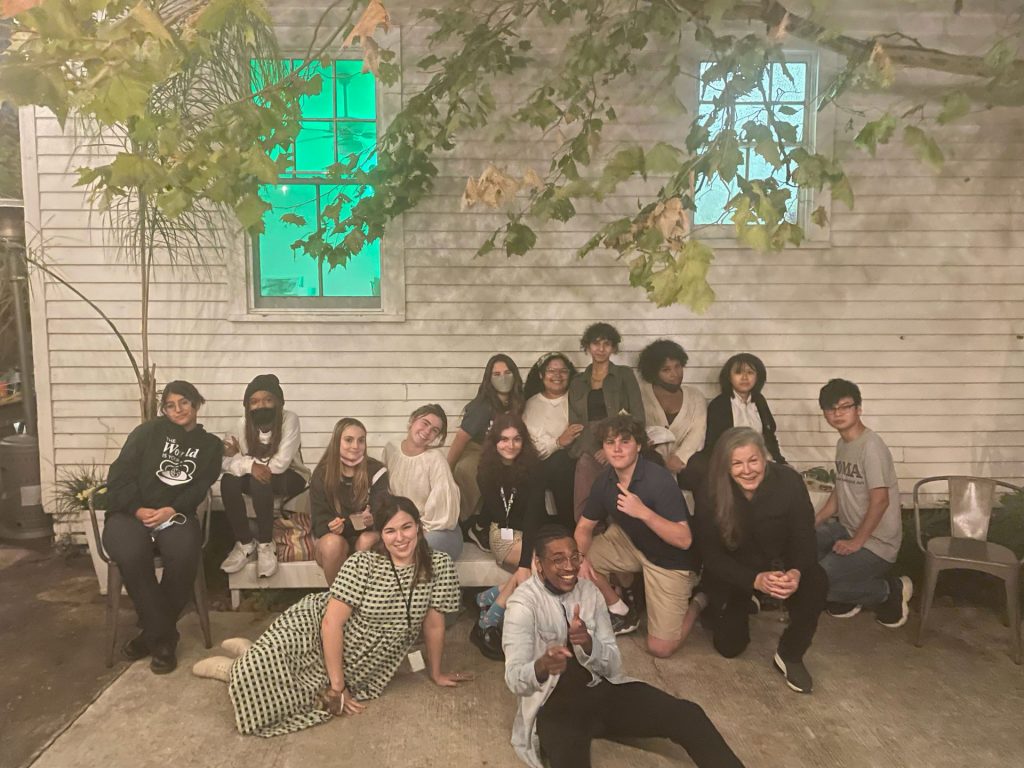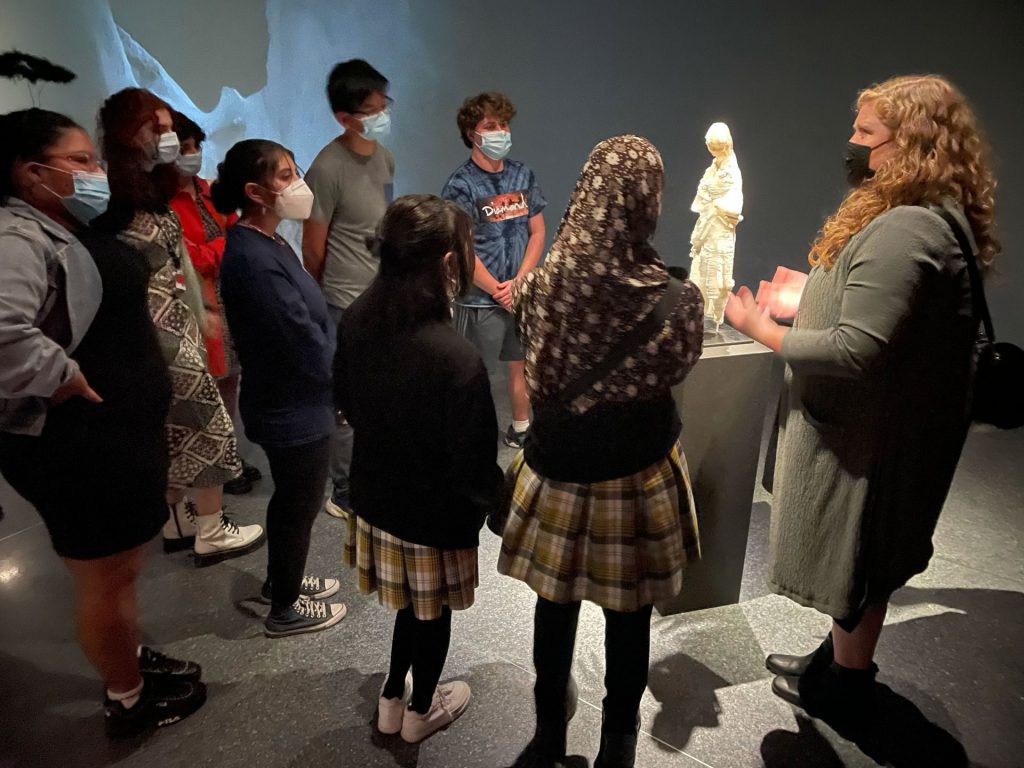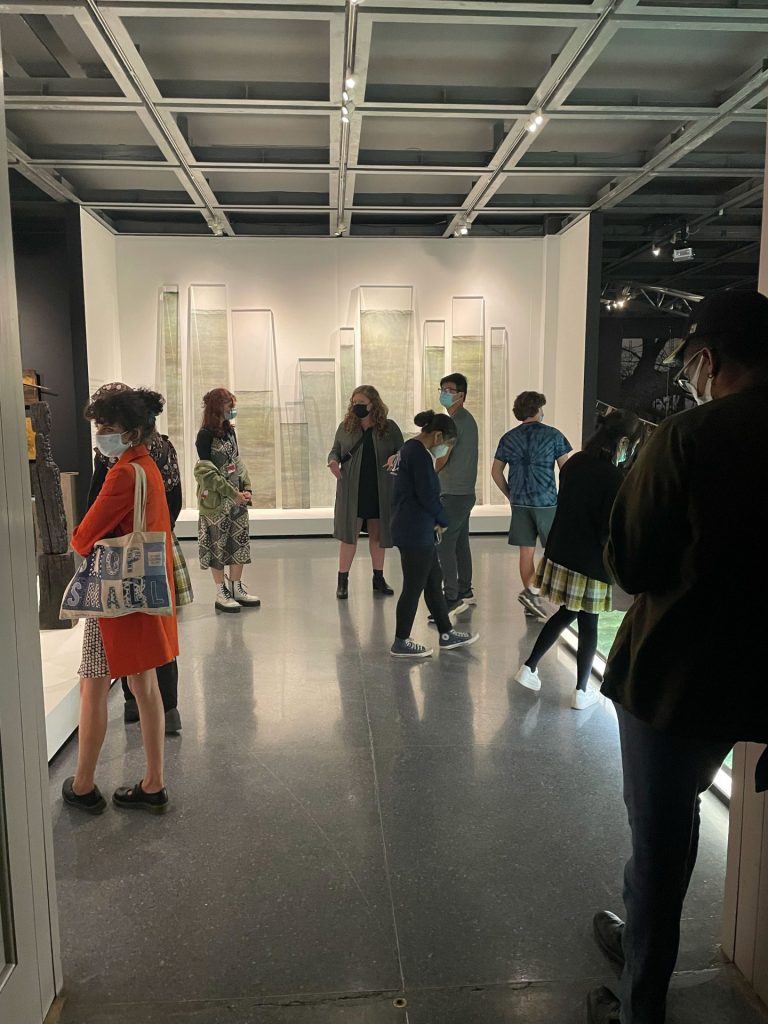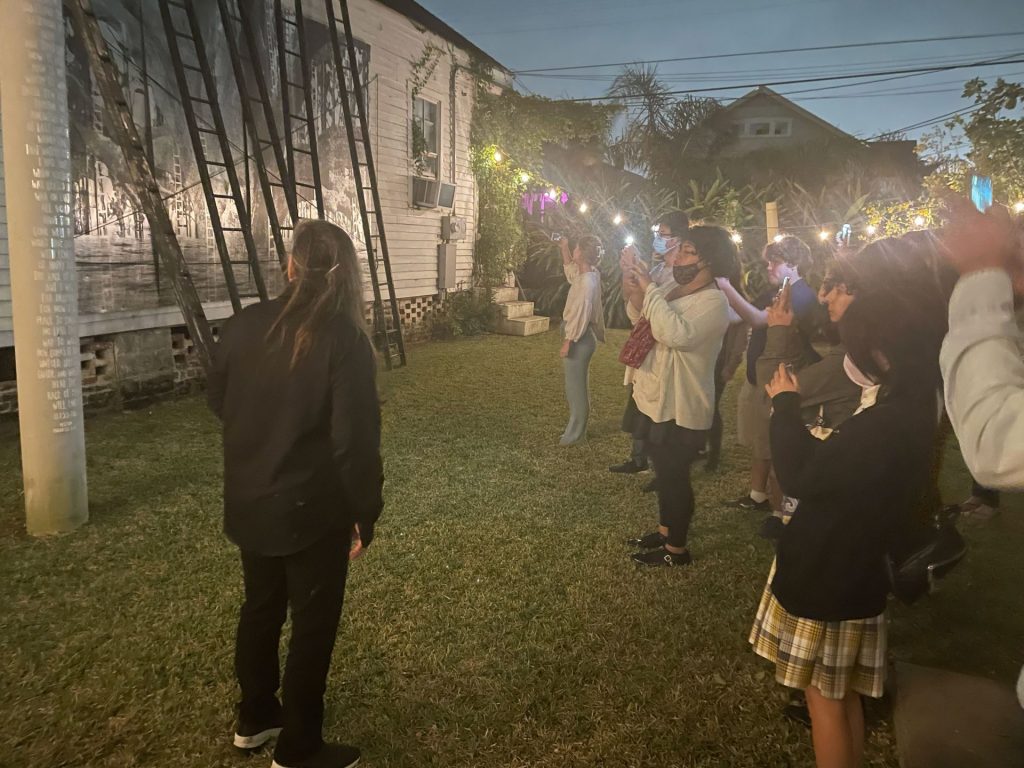
On a chilly November evening, members of the Teen Art Council (TAC) gathered under string lights on the patio at Camp Abundance, an artist residency and special event compound headed by artist and most generous host Dawn DeDeaux. DeDeaux’s retrospective exhibition The Space Between Worlds, currently on view at NOMA, has served as the focus of the TAC’s year thus far, fueling explorations in the galleries, conversations with NOMA staff members, and an upcoming creative offering for New Orleans teens.
This year, the Teen Art Council cohort consists of fourteen New Orleans high-school students representing each grade level, eleven schools, and a breadth of academic, creative, and professional interests and aspirations. This dynamic group represents the youth voice of the New Orleans community here at NOMA. Council members work closely with myself as NOMA’s Youth Programs Coordinator, and Xavier student and TAC teaching artist Kyle Salandy to develop events and resources for teen audiences, engage with museum staff and artists, and grow as creative thinkers and leaders in their communities.

DeDeaux’s exhibition asks viewers to consider their relationships to the natural world and the connection between creation and destruction. Who better than the TAC to engage with these questions?
Prior to the visit to Camp Abundance, TAC members participated in a walkthrough of the exhibition with curator Katie Pfohl, as well as in-depth sessions devoted to close looking, group conversation, and solo creative responses. A sensory memory exercise encouraged the teens to engage with a single work at the personal level by identifying an association with each of their senses. Another exercise took the form of a thought-experiment probing each member’s action plan for saving humanity based on astrophysicist Stephen Hawking’s unsettling warning that the Earth will be uninhabitable for humans by the year 2045. In DeDeaux’s words, “If we don’t leave, how do we save what we have?”
 Exhale. The teens’ primary takeaway from the exhibition was an overwhelming emotional weight; a sense of anxiety, shame, and imminent danger hung heavily throughout the space. This observation was based in both the content explored, and in the immersive physical experience of navigating among towering sculptural works and through installations layered with light and sound. They also took note of a thread throughout the show: reminders of the incredible beauty in nature, chaos, and decay—and the presence of hope.
Exhale. The teens’ primary takeaway from the exhibition was an overwhelming emotional weight; a sense of anxiety, shame, and imminent danger hung heavily throughout the space. This observation was based in both the content explored, and in the immersive physical experience of navigating among towering sculptural works and through installations layered with light and sound. They also took note of a thread throughout the show: reminders of the incredible beauty in nature, chaos, and decay—and the presence of hope.
At Camp Abundance, the teens gained invaluable insight into DeDeaux’s practice and way of being, deepening their connections with the exhibition. The group toured the property’s gardens and guest house, spotting years of the artist’s work hanging on the walls, tucked onto shelves, and situated in the grass throughout the grounds along the way. The TAC was joined by a serendipitous guest, painter Pinkney Herbert, who spoke about his painting that hangs in the compound’s Dutch House along with miniature sculpture offerings left behind by DeDeaux’s long-time friend and collaborator Lonnie Holley.
Back where we began, sufficiently awestruck and well-fed, the group gathered to discuss their questions about loss and vulnerability, the making of specific works in the exhibition, DeDeaux’s artistic and literary influences, and her views on humanity’s efforts to save our planet. A member asked, “Do you think we as humanity can save the earth?” DeDeaux shared thoughts on the role technology and science must play in paving a way forward: “technology got us in and technology is gonna have to get us out.” DeDeaux urged the group to encourage science, and to become engaged within ourselves and with one another. “We have to all reach our highest nature,” she said. “We can’t sit back and think it will solve itself on its own. I wish I could stick around to continue to do the work with you. It’s really in your hands. You’ve got a big job but you can do it.”
—Danielle Rives, Youth Programs Coordinator and TAC Teaching Artist

Stay connected with the TAC! Follow us on Instagram @noma_teens.
Teen admission to NOMA is always free, courtesy of The Helis Foundation.